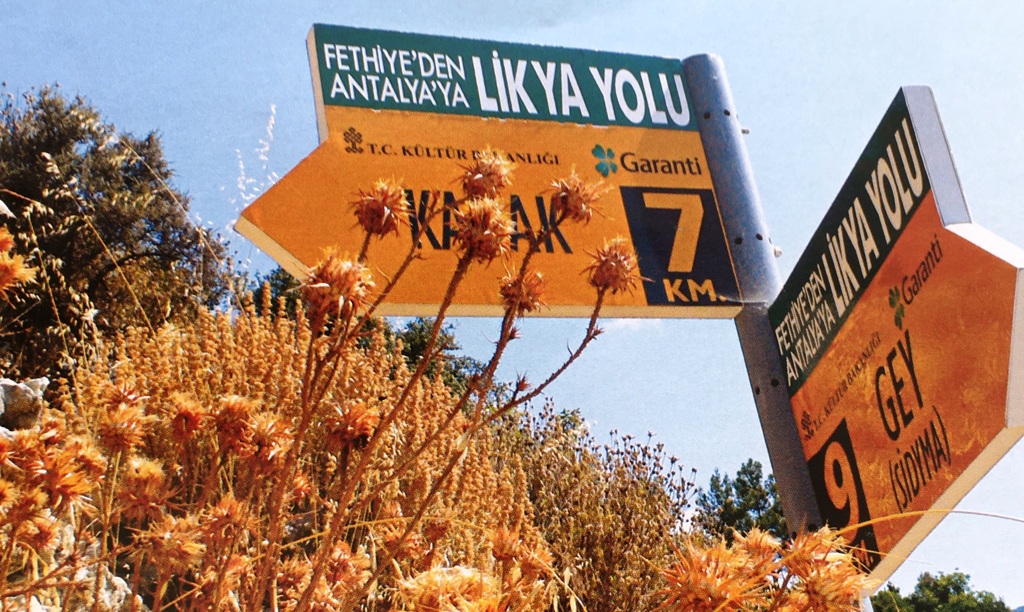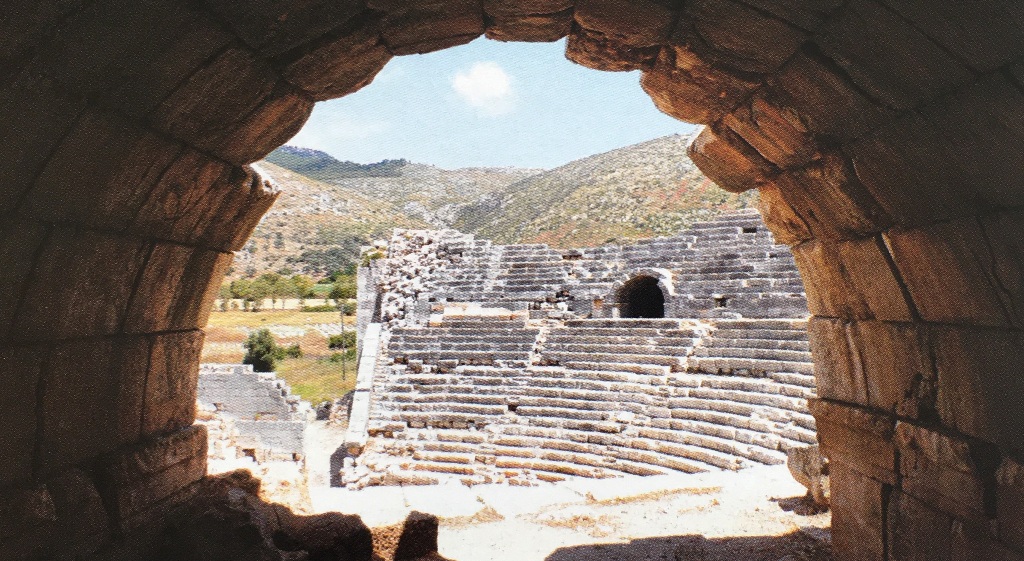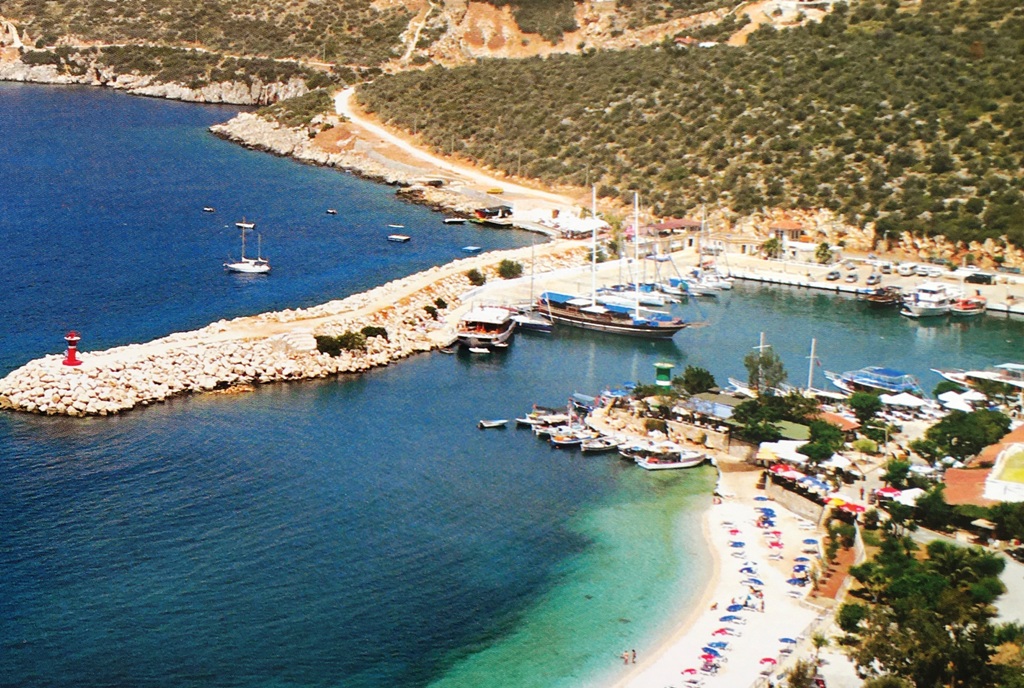Rebellious Riviera, Turkey …
Stream hill trekking on the Lycian Way
History of nature’s intertwined that the footpath from Fethiye to Antalya, extending by exhibiting the beauty that defies age of Lycia in every step of the Lycian Way, Turkey’s carrying the first walkways that feature marked according to international standards. The Lycian Way, which follows the coasts of the Teke Peninsula, which has managed to remain mostly untouched thanks to its difficult geography that does not allow to open wide roads, and the high plateaus inhabited by the nomads, is about 510 kilometers long. The Taurus Mountains, which follow the south of Anatolia parallel to the coast, join the sea here, while it is relatively easy to follow the sea on the eastern routes of the road, while the parts between Fethiye and Kaş are almost covered with goat routes that descend and descend from the sea. The Lycian Way, marked with the contributions of the Ministry of Culture and the efforts of Kate Clow and many local and foreign volunteers, was opened in 2000. This ancient road, which connects the ancient roads used in the Lycian Confederation and Roman times, the aqueducts extending for kilometers, the migration routes of the nomads and the paths following the paths, attracts more and more local and foreign hikers every day. The red and white signs that appear every 30 meters along the routes are mostly painted on stones and rocks, sometimes on trees. There are signs at crossroads and route starts that also provide distance information. Routes require walking 10-20 kilometers a day, depending on their difficulty. Although the Lycian Way is mostly walked in groups, it is possible to come across lonely hikers. There are also guided tours that are generally preferred by foreign groups. Offering many comfort to hikers, these tours are mostly organized in the spring months. In addition, there are also hikers on day trips on the nearby routes around the hotels where they spend their holidays.

Mediterranean drunkenness …
On a hot August evening, my cell phone rings as a heavily loaded backpack on my back climbs the Faralya hills with blood sweat. My father is looking and he wonders where I am, how the walk is going. I tell you that I can’t talk too much, that we haven’t found a flat area where we can camp yet, even though the sun is about to set, and I am having a hard time. A few hundred meters later, we set up our tents in a suitable place, and after eating something, we immediately fall asleep. The first lesson we learned on the Lycian Way, where we started walking from Ölüdeniz, is that August is definitely the wrong time for this road and if we want to cope with the heat, we need to get up much earlier and complete the next routes early in the morning. We wake up at 05.00 the next morning and continue our walk, looking at the magnificent views that reveal the Fethiye shores from above. We reach Kabak Village early, passing the beehives, cool fountains and olive groves that appear before us like a small oasis in the pine forests. The rest of the day, should we swim in the bay below the village and stay in one of the tens of camps here?
He will pass by discussing whether we should climb towards Alinca or not. During the 9 days we will continue, we will have similar discussions frequently. Which of the alternative routes should we follow, should we stay in tents or in village houses, is this enough for today or should we continue walking? Slopes decorated with thyme, sage, fig, carob and laurel trees; goat paths decorated with alumina, wild gladiolus, clamen, crocuses, orchids or daisies depending on the season; populated little villages that suddenly appear amid desolation; legends read from books and stories told by villagers; Magnificent olives with their huge trunks that you cannot know how old they are; The Mediterranean, which is watched from a bird’s eye view, you cannot get enough of watching… Sometimes we deviate from the route and swim down to the small beaches located at the foot of these slopes, and sometimes we get too lazy to climb to swim. Fatigue and heat aside, maybe we are not accustomed to breathing so much oxygen, maybe because of the breathtaking scenery that we come across, we are always drunk with happiness. Although there are quite rich accommodation options thanks to developed tourism in Patara, Kalkan, Kaş, Finike, Adrasan, Olympos, Çıralı and Tekirova, where the road passes, village houses are our only alternative, apart from setting up tents on many routes. Of course, staying in village houses does not offer the comfort of a hotel, but it is a good opportunity to meet the local people who continue to lead a semi-nomadic life and to experience them for a short time instead of getting tangled in their lives. After the tiredness of walking, eating delicious home-made meals and having a cool sleep on clean sheets is also a must.
The taste of apples, the stillness of silence.
On some routes, we get the feeling that we are far from civilization. This geography is getting desolate, especially in the plateaus and far from the sea. Sometimes factors such as not encountering a single person or a track of modern civilization for miles, lack of shopping opportunities in many of the small villages we have passed and the fact that mobile phones do not receive signals on some parts of the road are proof that we are not mistaken in this feeling. The environment and conditions along the Lycian Way do not seem to have changed much from ancient times to this day. As we walk the broken Roman roads, where slaves, soldiers and merchants crossed the same land with heavy loads and sandals on their backs two thousand years ago, perhaps the same fatigue as those people, the same impatient excitement to reach the range ahead. Patara’s dunes burn our feet equally and we run to the fountains we see with the same thirst. As such, the value of bread, excess, water and, of course, the love in our eyes increases as we increase. The closeness and support we see from the local people along the way is our second source of happiness besides the generous landscapes offered by nature. The kindness of the little girls with whom we played games for hours together, the taste of the hard-juicy apples offered by the villagers we encountered on the road to the Bosphorus Village, the freshness of a glass of ice-cold water extended as we thought we were about to evaporate from the heat in Sdyma, tea, figs, tea, figs, for us tired walkers almost everywhere. We cannot forget the generosity of the people who serve coffee. The ancient cities we encounter along the Lycian Way, which is considered to be one of the most beautiful long-distance walking routes in the world, rock tombs, ancient roads built with stones of thousands of years, tiny turquoise bays, wild animals we see from afar, waterfalls, difficult rock descents and old village houses in a single article. not possible to fit. The Lycian Way connects its hikers with the unique excitements and joys it promises. Next year, in a more accurate and broader time, I will overcome these paths with less burden on my back and with more confidence. I will take more pictures and walk slower and digest the landscapes more. I promise myself to complete the routes that we cannot continue due to the timelessness and heat in the future, and to walk the alternative routes, and start the return journey to Istanbul. In my hand, the gift of a little boy in Gavurağılı, read a long hedgehog, the map of the Lycian Way, which I can’t get enough of looking at, looking and dreaming on my knee …

YOU’LL FIND ON THE LYCIAN WAY
Along the way, you will see the small city, castle and harbor ruins as well as the opportunity to explore many important cities of the ancient age such as Letoon, Xanthos, Patara and Simena.
Surprises that amaze you with their beauties such as Gelidonya Lighthouse, Gavurağılı Village and Göynük Canyon.
The warm benevolence of the shepherds and Yoruks you encounter high in the mountains and hills.
The blue of the Mediterranean, which you can watch mostly from the hills, always takes on different tones at different times of the day.
A vibrant fauna with mountain goats, wild boars, porcupine hedgehogs, wild cats, turtles, butterflies and birds, which the locals call clacking, as well as a colorful rich flora with flowers, grasses and trees.

SUGGESTIONS
Before you set off, get the Lycian Way book by Kate Clow, including a detailed map, and plan your walk as well as possible. April-early May and September-October are the best times to walk the Lycian Way. The best thing you can do to navigate on hot days is to walk early in the morning and in the evening.
Be careful not to take more weight with you than necessary. You do not need to carry large amounts of camping gear. Many of the routes include small settlements where you can stay in village houses and eat.
If you lose your waypoints and 10 minutes have passed since the last track you saw, you are most likely on the wrong track. Go back to the last sign you saw and look for the new sign in other alternative directions, without getting too far.
Even if you are hiking in the spring or autumn, don’t forget to take sunscreen, water bottle, hat with you. In Lycia, it is possible to experience quite sunny and hot days in almost every season except winter.
Always wear long pants and comfortable walking shoes to protect your legs from bushes and branches.

ACCOMMODATION
Faralya
George house
George House, where you can stay in the guesthouse’s rooms or camp with your tent, is located in the village center of Faralya. Tel: (0 252) 642 11 02
Pumpkin
Yoga Tent Camp
Among the dozens of camping options in Kabak Bay, you can set up your own tent or use the comfortable tents of the camp in Yoga Tent Camp, which is preferred by trekkers with its affordable prices and a calm location away from the crowd at the bottom of the bay.
Tel: (0 535) 452 86 31
Gey
Yediburunlar Lighthouse
It is recommended that you make a reservation in advance to stay in this boutique hotel, which is located just outside the village and located on the shore of tomorrow. Tel: (0 252) 679 1001
Gavurağılı
Patara Lodges
Patara Lodge, the only accommodation option in Gavurağılı, an abandoned and uninhabited village today, opens in mid-March and closes towards the end of October. Tel: (0 536) 235 22 54
Bezirgan
Owlsland
Owlsland, located right at the entrance of the plateau, offers trekkers a comfortable accommodation option in a unique nature. Tel: (0 242) 837 52 14
Cukurbag
Plato
In Çukurbağ Village, which is open throughout the year, you can either stay in rooms or camp with your tent. Tel: (0 242) 83 954 29
Beycik
Olympos Mountain Lodge
A small but clean and attentive accommodation option in nature in Beycik.
Tel: (0 242) 816 12 46
Goynuk Plateau
White House
Beyaz Ev provides service with its dormitory specially designed for walkers in Göynük Plateau.
Tel: (0 532) 616 28 65